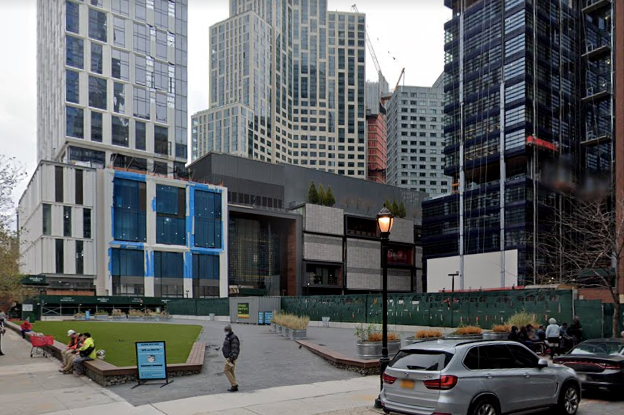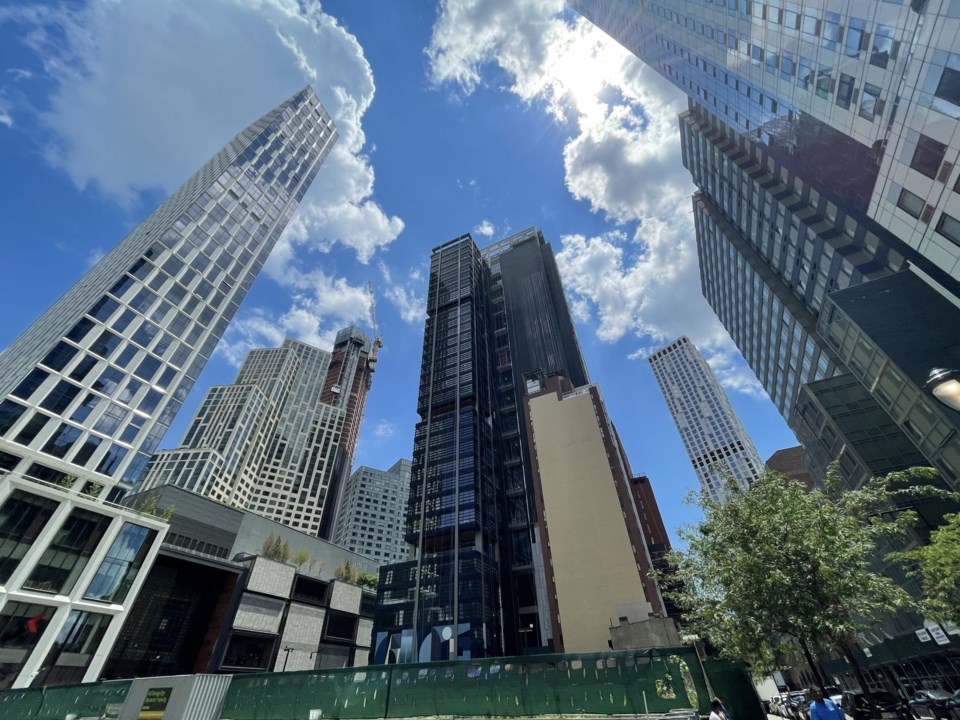Late last week the City's Economic Development Corporation (NYCEDC) announced it would permanently rename Willoughby Square as Abolitionist Place and allocate $15 million to constructing 1.15 acres of open space at the site.
The renaming, although celebrated by many elected officials, left some community members with questions, specifically — why was the word park dropped from the planned title of Abolitionist Place Park and what was happening with plans for a monument that had been stalled in the design process.
The confusion was heightened by the unannounced delaying of the renaming ceremony, which was planned to happen earlier in the week in tandem with the ribbon cutting for 1 Willoughby Square.
Shawné Lee, who — alongside her family and other activists -- has been advocating for the preservation of the area's abolitionist history for decades, said the whole situation made no sense.
Firstly, she said, "the people, including Community Board 2, agreed that it should be named Abolitionist Place Park, it is on Abolitionist Place it is not Abolitionist Place."
And secondly, she said the concept for the planned monument, although created by a fine artist "and no disrespect to her," did not connect with the local history.
"I really don't understand what they're doing. It's not in the interest of preserving the history that is within that area, that whole area is of the abolitionist movement, and it seems like they are just trying to hurry up and do something thinking we'll just shut up because there is a young lady who's Black who was commissioned to be the artist."
In January, the proposal by selected artist Kameelah Janan Rasheed was made public in a Public Design Commission meeting. The proposal includes pavement engravings and bronze placards, highlighting Brooklyn's antislavery movement and its legacy.
But Lee, whose mother once owned the recently landmarked property at 227 Duffield Place, said the design didn't fit in the area -- with risks of people walking over names and stories -- or do justice to the history, as would a monument to the Sisters of Freedom.
Lee has advocated for years to build a monument for the group of Black women suffragists, that includes educator and abolitionist Sarah J. Garnet and the investigative journalist Ida B. Wells. There is currently a petition running in support of the monument that has gathered more than 3,500 signatures.
In a statement to BK Reader, NYCEDC said Rasheed's public engagement process would include speaking with stakeholders and the public this summer to develop her concept and help craft the text that will be included in the monument.

"We're working closely with Department of Cultural Affairs to commission public artwork through the Percent for Art program that recognizes abolitionist history in the neighborhood," an NYCEDC spokesperson said in a statement.
"The City looks forward to continued community engagement as the artists design process unfolds."
In regards to the renaming of the area, NYCEDC said although Community Board 2 and community members had decided to rename the square Abolitionist Park Place, the area was not mapped as parkland and was not within the jurisdiction or managed by the Department of Parks and Recreation.
If it was designated parkland, developments on adjacent land parcels that are in the Downtown Brooklyn Neighborhood Plan would not allowed.
"We worked closely with the Community Board and local leaders to ensure the name of the open space was in line with preserving the abolitionist history of this area," the spokesperson said. "We came to an agreement to name the open space Abolitionist Place."
Abolitionist Place, as planned by the City, will include a new play area, lawn space, dog park, ornamental plantings and multiple seating areas.
In a press release, NYCEDC President and CEO Rachel Loeb said the new name honored the "legacy of the many men and women of this area who fought to abolish slavery and make meaningful social reform for generations to come."
"When complete this will be a wonderful, open gathering space for Downtown Brooklyn that will enrich the lives of those living in this community."
Also in the release, Brooklyn Borough President Eric Adams said the unveiling of Abolitionist Place was the culmination of a nearly two-decade promise to those living in Downtown Brooklyn.
"This much-needed open [space] fulfills longstanding promises from NYCEDC to community advocates and residents, and I thank NYCEDC and the advocates for their efforts to ensure that the promises made were kept -- and kept in a way that honors our collective past."
As part of the construction of Abolitionist Place, the NYCEDC selected Rasheed in partnership with the DCLA's Percent for Art program to design the public art piece commemorating the abolitionist movement.
The press release said her proposal — "Questions Worth Having Answers To" — was in design and would integrate a broad range of community feedback being collected.
It said the project built off 'In Pursuit of Freedom,' a multifaceted public history initiative led by the Brooklyn Historical Society, Weeksville Heritage Center and Irondale Ensemble Project that explored the everyday heroes of Brooklyn's anti-slavery movement.
Lee said 'In Pursuit of Freedom' was "a beautiful, beautiful tribute to the abolitionists in the area," but NYEDC still had a long way to go in aptly honoring the area's history.
"I'd like to say to them why don't you try joining the right side of the fence why does it always have to be conflict against each other. You are supposed to be working for the people and with the people; listen to the people."
**correction: a previous version of this article incorrectly stated that Shawné Lee owned the house at 227 Duffield Place. The property is owned by New York City and managed by the Department of Administrative Services.



.png;w=120;h=80;mode=crop)
